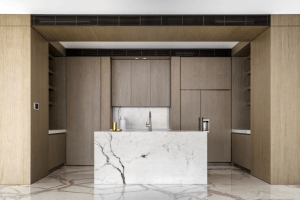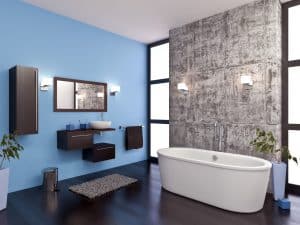Did you know that quartz and quartzite are not the same thing? While, when it comes to considering different stone materials, these two options are often compared to one another, they are distinct in many ways.
From origin and properties to aesthetic appeal and durability, there are many layers to the quartz vs quartzite analysis, and we are here to break it all down for you.
What is Quartzite vs Quartz?
Origin and Development
Quartzite is a naturally occurring metamorphic rock. It is formed from sandstone when it is subjected to high heat and intense pressure. These forces kick start a process that crystallises the quartz grains within the sandstone. The result is a dense and durable natural stone that offers both practical and aesthetic utility.
Quartz, on the other hand, is not a naturally occurring rock. It is a man-made material and is often referred to by the more descriptive name of engineered stone. In most cases, quartz is created by combining crushed quartz crystals with various resins, polymers and pigments. Normally about 90-95% of quartz is natural quartzite but this can vary.
Use in Construction and Interior Design
Both quartzite and quartz are used widely in construction and interior design. Quartzite is widely used for countertops, wall cladding, and outdoor design thanks to its unique natural aesthetic patterns and colour, as well as its hardiness to scratches and heat resistance.
Quartz or engineered stone is widely used in kitchen countertops, bathroom vanities and interior flooring. This non-porous material makes it easy to maintain and resistant to maintenance. Plus, being man-made it can be manufactured in a variety of standard colours and patterns.
Comparing Quartz vs Quartzite
1. Natural vs Artificial
The main difference between these two stone varieties is that quartzite is a natural stone and is quarried from the ground for use in construction and design. On the other hand, quartz is not a naturally occurring material and is made in a factory.
2. Practical Functionality
The truth is that both quartzite and quartz are hardy and durable materials – hence their popularity in construction and home design. However, there are some slight differences. Quartzite is a naturally occurring rock and therefore, thanks to the intensity of its formation process, is extremely durable. By comparison, quartz is highly durable but ever so slightly less so.
When it comes to porosity, which can make a material more or less resistant to staining when exposed to liquid, quartzite is slightly more porous whereas engineered stone is non-porous. It is recommended that any natural stone surface is regularly resealed to best protect it from staining and other damage.
3. Heat Resistance
If you are considering quartzite vs quartz countertops or just about any kitchen-based application, heat resistance is an important consideration. For best practice, we always recommend using a trivet or mat and not placing hot dishes and pots directly onto any stone benchtop. Nevertheless, for the highest level of heat resistance, quartzite is the best option. While quartz is still moderately resistant to heat, it is less resistant when compared to its natural counterpart.
4. Customisation
Both quartz and quartzite can be highly customised. But in different ways. Quartz is produced in a factory so it can be customised to achieve just about any colour, pattern and style. But availability is subject to the production line and every slab or quartz in that run will be identical. Quartzite is a natural stone and is therefore limited to the natural variations of the rock in its respective quarry. What this does mean, though, is that every single slab is unique in its own right.
5. Price
Quartz is most commonly the cheaper option. This human-produced stone does not need to be quarried from the ground and transported around the world. So while quartz offers a more budget-friendly option for those constrained when it comes to price, quartzite is a premium choice that should be considered as more of a long-term investment that will last, in terms of aesthetic and functionality, long into the future.
Understanding Engineered Stone Use in Australia
In Australia, both quartz and quartzite are quite popular options for use in construction and interior design.
Quartz is favoured for its versatility, uniformity in production, lower price and ease of maintenance. In the past, this has made it a common choice for use in modern kitchens and bathrooms especially. Quartzite is appreciated for its natural beauty and strength. Being a premium natural stone material, it is often preferred in high-end designs.
However, recent regulatory developments in Australia have impacted the production, use and availability of engineered stone/quartz.
As of 1 July 2024, the government has prohibited the ongoing use of engineered stone entirely. Why? When engineered stone is cut, it releases a fine silica dust that – when inhaled – can and has caused lung disease (or silicosis). Recent reports have indicated that workers have been developing diseases at an alarming rate and over time the calls of unions and health advocates has resulted in stricter regulations. Recently, an ultimate ban on the manufacture, supply, processing, and installation of engineered stone products was put in place.
Find the Perfect Stone at Euro Marble
Ultimately, while both quartz and quartzite serve valuable and unique roles in construction and interior design, their origins, properties, and implications for health differ significantly.
Of course, the recent ban on engineered stone in Australia due to silicosis risks, makes natural stones like quartzite the more accessible, safer and better option for future projects.





